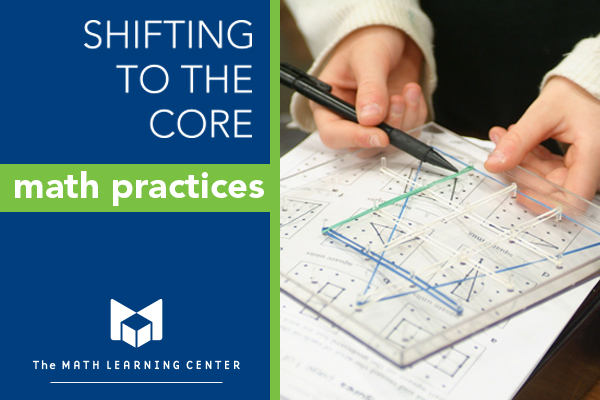
Shifting to the Core, part 4
The Common Core State Standards identify eight mathematical practices that characterize the ways in which mathematically proficient students engage with mathematics. The content standards describe what students are doing in mathematics, and the practices describe how they are doing it.

For many teachers, these practices represent a dramatic shift in how their students are expected to learn and communicate about mathematics. In a classroom where students apply the Mathematical Practices, you can expect to see them:
- Working on complex problems for extended periods of time
- Representing problems and their strategies for solving them in a variety of ways: with manipulatives, sketches, words, and numbers and symbols
- Talking to one another about their mathematical thinking
- Making choices about the tools—including measuring devices, manipulatives, strategies, and technology—they find most useful for exploring an idea or solving a problem
Over time, you and your students will become more comfortable using and talking about the Mathematical Practices. We’d love to hear about how these habits of learning are developing in your classroom. How has implementing the practices influenced your teaching? How are students responding? Do some of the practices come more easily than others?
Martha Ruttle is managing editor for MLC.